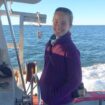LOBO Buoys
Land & Biogeochemical Observatory Buoys
The Land/Ocean Biogeochemical Observatory (LOBO) Buoy Program
is organized and maintained through the Damian C. Brady Lab at the Darling Marine Center. This program was originally established through the SEANET project with funding from an NSF EPSCoR grant. The original purpose was to build collaboration amongst researchers and to help facilitate the advancement of sustainable and ecologically minded aquaculture along the coast of Maine. This mission has continued through diverse support and industry acceptance of the LOBO buoys. This buoy program serves to capture a baseline understanding of ocean chemistry in nearshore marine environments using a suite of instruments that record parameters such as temperature, dissolved oxygen, pH, turbidity, chlorophyll, and more.
Instruments & Parameters
A typical buoy deployment includes seven distinct instruments that measure 15 water quality and environmental parameters.
- WQMx (Sea Bird Scientific) – salinity, depth, dissolved oxygen, chlorophyll, turbidity, conductivity, temperature, CDOM
- SUNA (Sea Bird Scientific) – nitrate concentration
- SeaFET (Sea Bird Scientific/SAtlantic) – pH
- Aquadopp (Nortek AS) – current speed, current direction
- C-Star (Sea Bird Scientific) – transmission
- PAR (Sea Bird Scientific) – photosynthetically active radiation, in air
- ECO-PAR (Sea Bird Scientific) – photosynthetically active radiation, in water
LOBO Team
Funding Support





